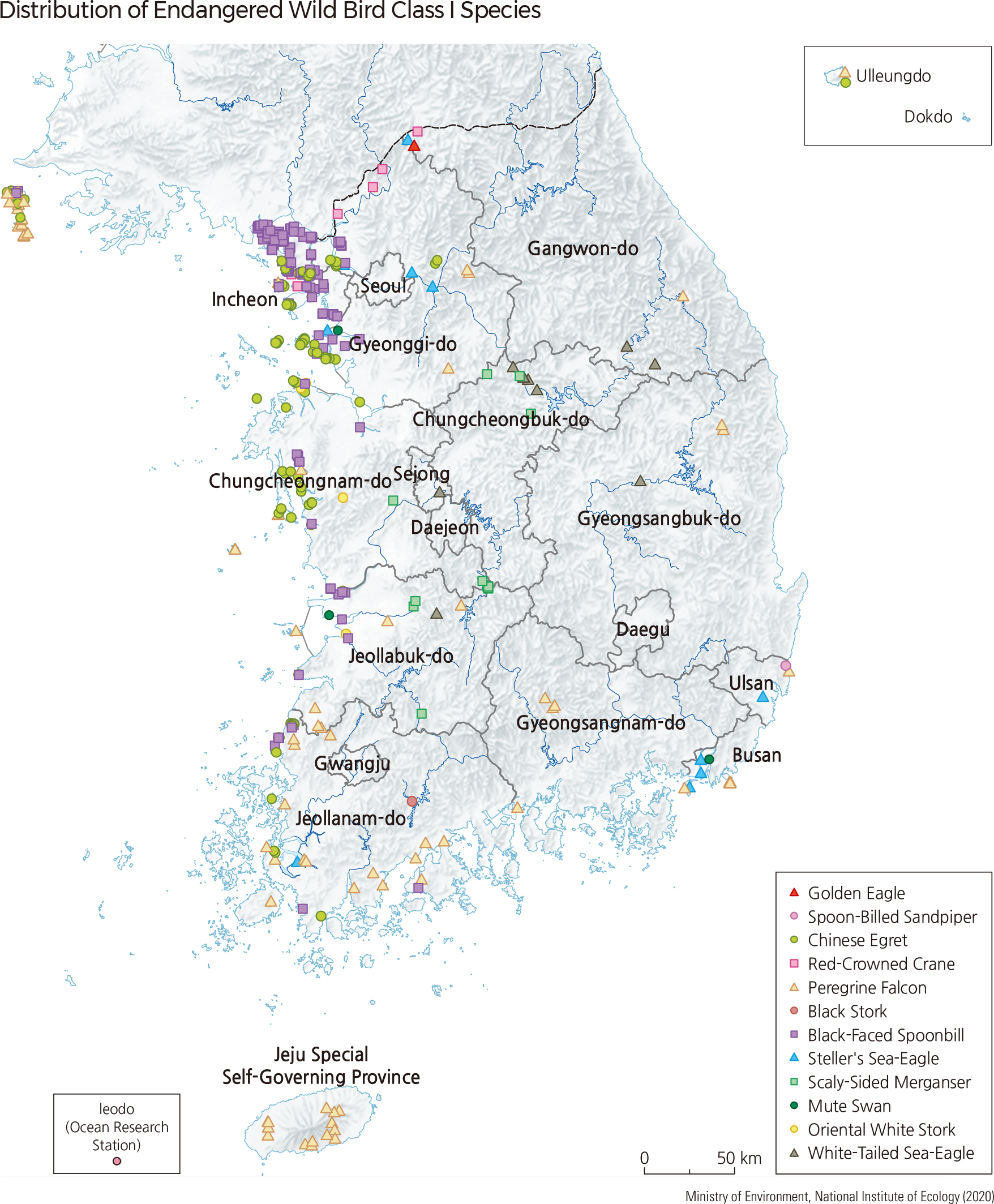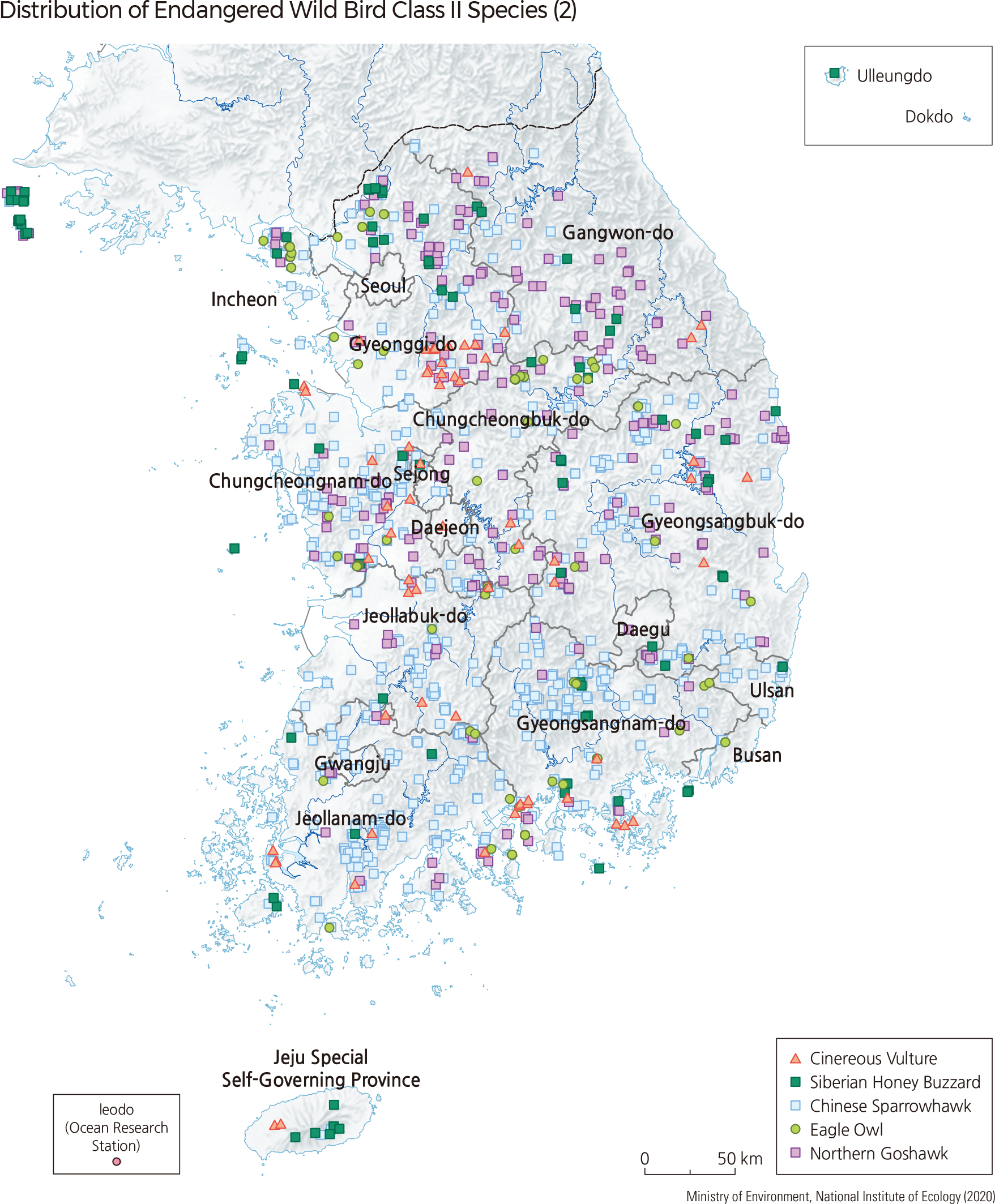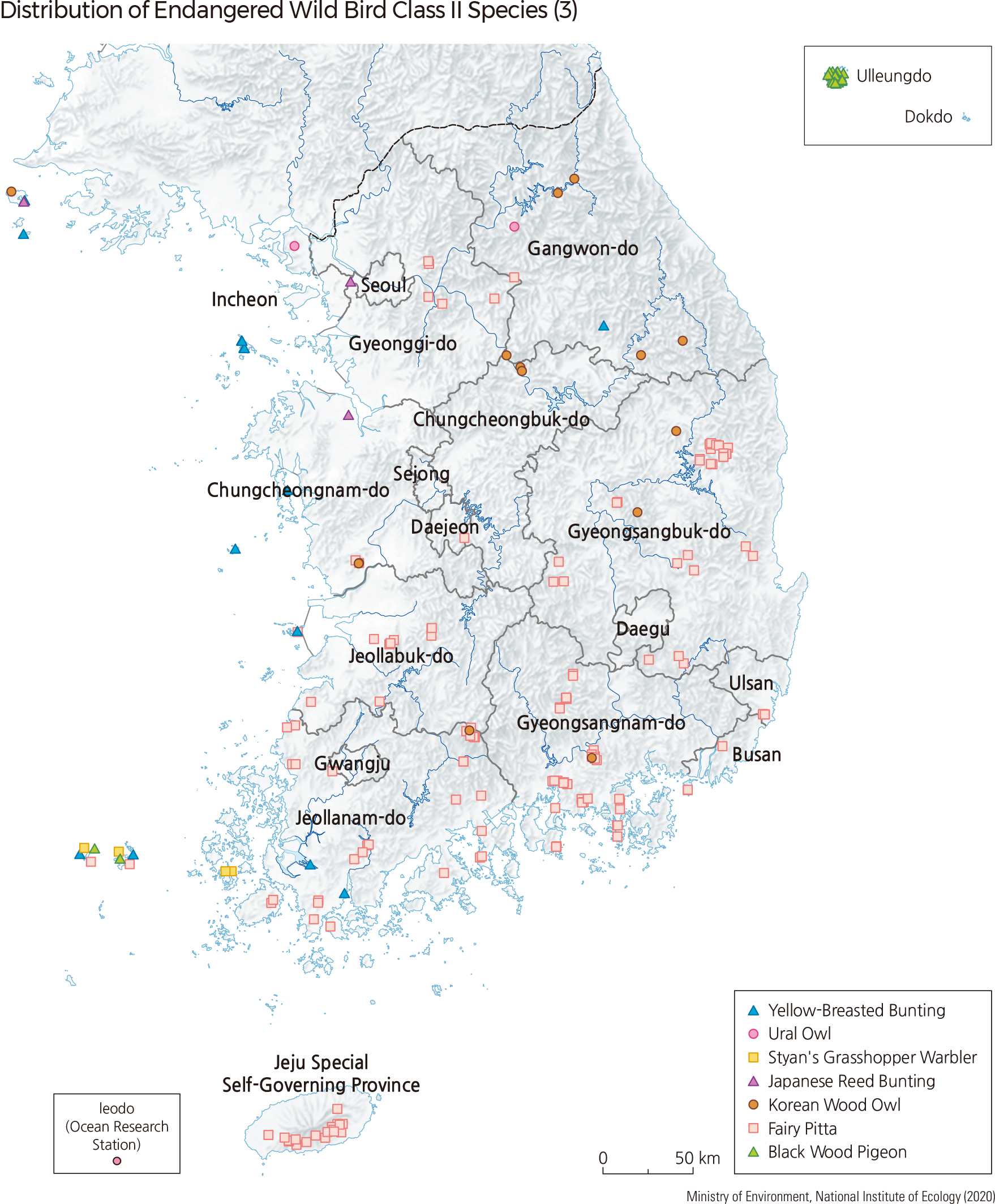English II 2020
As of 2019, among the 537 bird species that have been identified in Korea, 63 species have been designated as Endangered Wildlife (14 species of Class I, 49 species of Class II) by the Ministry of Environment.
The Endangered Wildlife Class I of birds includes the following bird species. Mute Swan arrives at Hwajinpo Lake and Cheonsu Bay to breed during the winter season. The Oriental Stork wintering along the coast and estuaries. The Black-faced Spoonbill breeds along the uninhabited islands off the west coast, with a small population wintering in Jejudo. The Chinese Egret breeds along the uninhabited islands off the west coast, and the Peregrine Falcon breeds mostly on island cliffs or coastal areas. The White-tailed Eagle and Steller's Sea Eagle winter along the coast and estuaries, large-scale reclamation grounds, water reservoirs, or large rivers. While there were old breeding record of the Golden Eagle breeding inland, they mostly winter along rivers, coasts, and inland plains. The Red-crowned Crane visits South Korea in the winter; the Spotted Greenshank and Spoon-billed Sandpiper can be observed on west and south coast tidal flats during the spring and autumn migratory seasons. The White-bellied Woodpecker inhabits forest areas where broadleaved trees and conifers grow together in various parts of South Korea. However, no sightings have been recorded since the 1990s.
The Endangered Wildlife Class II of birds includes the Swan Goose and Bean Goose, inhabiting wetlands and riparian areas; the Eurasian Oystercatcher, Far Eastern Curlew, and Japanese Murrelet, observed on tidal flats or at sea; the Japanese Wood Pigeon and Styan's Grasshopper Warbler, inhabiting in island habitats; the Chinese Sparrowhawk, Hen Harrier, Eurasian Eagle-owl, Northern Goshawk, Black Woodpecker, and Fairy Pitta, living in grasslands or forested areas; and the Black Kite, Upland Buzzard, and Cinereous Vulture, living on open terrain. Of the 47 bird species that have been designated as Natural Monuments, 46 species are wild birds. |



